A restaurant can have a cozy dining room, a perfect menu, and the best chef in town – but if people can't find it in search results, the tables remain empty. The competition in the food service industry is fierce, and aggregators like Google Maps or Tripadvisor capture attention and charge commissions.
This is why more and more owners are turning to a direct channel: restaurant SEO. It's a strategy that helps attract guests not through intermediaries, but directly from Google. In this article, we'll explore how restaurant marketing turns a website into a source of reservations and loyal customers.
SEO for Restaurants: Your Recipe for a Constant Flow of Guests
To make a restaurant independent of aggregators and advertising, it needs a steady stream of guests from search results. SEO for restaurants helps attract customers directly, strengthen the brand, and receive bookings without commissions.
The Specifics of Restaurant SEO and Why It's Better Than Aggregators
Restaurant SEO isn't just about optimizing a website for rankings. It's a way to showcase the establishment's real advantages: location, cuisine, atmosphere, and reviews. People don't search for just "a restaurant"; they look for a specific place near them.
Aggregators like TheFork, TripAdvisor, or Google Maps can help generate traffic, but they have their drawbacks:
- They display nearby competitors, diverting the customer's attention.
- They charge a commission on every order or booking.
- They don't allow control over content and SEO settings.
- They limit analytics – you can't see exactly how customers found you.
When a restaurant has its own website with proper restaurant website SEO, it functions as a sales tool. You manage the content, reviews, promotions, and search visibility. It's an independent channel that consistently brings in guests, even if aggregators change their algorithms or increase commissions.
A restaurant that has built a strong SEO foundation gets a flow of visitors without constant advertising expenses. The website ranks high for queries like "Italian restaurant downtown" or "where to eat in Vilnius," and people book tables directly.
4 Reasons to Invest in SEO Today
- Increased Visibility and Trust. Most users only click on the first 3–5 results. If you're there, people perceive the restaurant as popular and reputable.
- Savings on Advertising. Advertising on Google Ads or social networks requires a budget every month. Restaurant marketing through SEO takes longer to show results, but is more stable – without daily costs.
- More Direct Orders. People book tables directly, without paying commissions to aggregators. This increases profit per guest.
- Long-Term Effect. By setting up the website structure, local keywords, and reviews, you get a steady stream of organic traffic. Even if active promotion is paused, the website continues to work.
Good SEO is not a temporary campaign but part of a long-term strategy. It provides independence and makes the brand recognizable. A restaurant with strong SEO isn't dependent on advertising, aggregators, or seasonal slumps.
The Perfect Restaurant Website: Fast, User-Friendly, and Generating Orders

A good restaurant website is a showcase, cash register, and manager all in one. It shouldn't just look good; it must help the user complete their task: choose, book, and visit. Without technical and content-related restaurant website SEO, even the most stylish design won't yield results.
4 Website Elements Without Which You Lose Customers
- Loading Speed. People won't wait. If a website takes more than three seconds to load, half of the visitors leave. Check the speed using Google PageSpeed Insights or GTmetrix.
- Responsiveness. Most users search for restaurants on their phones. If buttons are too small or text is unreadable, orders are lost.
- Simple Booking. The "Book a Table" button must be noticeable and accessible on all pages. The fewer steps to confirmation, the higher the conversion rate.
- Contact Information. The address, phone number, map, and opening hours should be prominently displayed at the top of the site and repeated in the footer. People shouldn't have to search for where to call.
A well-designed website is the first step towards successful restaurant marketing. It builds trust, simplifies navigation, and turns a user into a guest.
Thoughtful Structure: From the Homepage to Online Booking
The website structure should guide the user logically: "learned – browsed – chose – booked." Start with clear navigation:
- Homepage – a brief description, interior photos, and a "Book Now" CTA.
- Menu – categories, dish photos, and prices.
- About Us – history, the chef, and cuisine highlights.
- Reviews – integration with Google, review sites, and social networks.
- Contacts – map, phone number, contact form.
It's best if booking is available from any page. Don't force the user to go back to the homepage. The fewer clicks to the goal, the higher the chance they'll complete the action.
The Invisible Helper: How Schema Markup Increases Click-Through Rate
Schema markup helps search engines better understand the website's content. Thanks to it, search results can display star ratings, dish prices, photos, and opening hours. This improves CTR and makes the restaurant more noticeable among competitors.
Use LocalBusiness and Restaurant schemas. Add fields for reviews, menus, and booking options. Check the markup validity using the Google Rich Results Test.

Without schema markup, a site looks "empty" even in the top positions. With it, it attracts attention, gets more clicks, and enhances restaurant marketing.
Local SEO: How to Rank in "Near Me" Search Results
When someone searches for "cafe near me" or "places to eat nearby," Google shows restaurants in the vicinity. To appear in these results, it's crucial to correctly configure local SEO for restaurants. It's one of the fastest ways to attract guests, especially in cities with high competition.
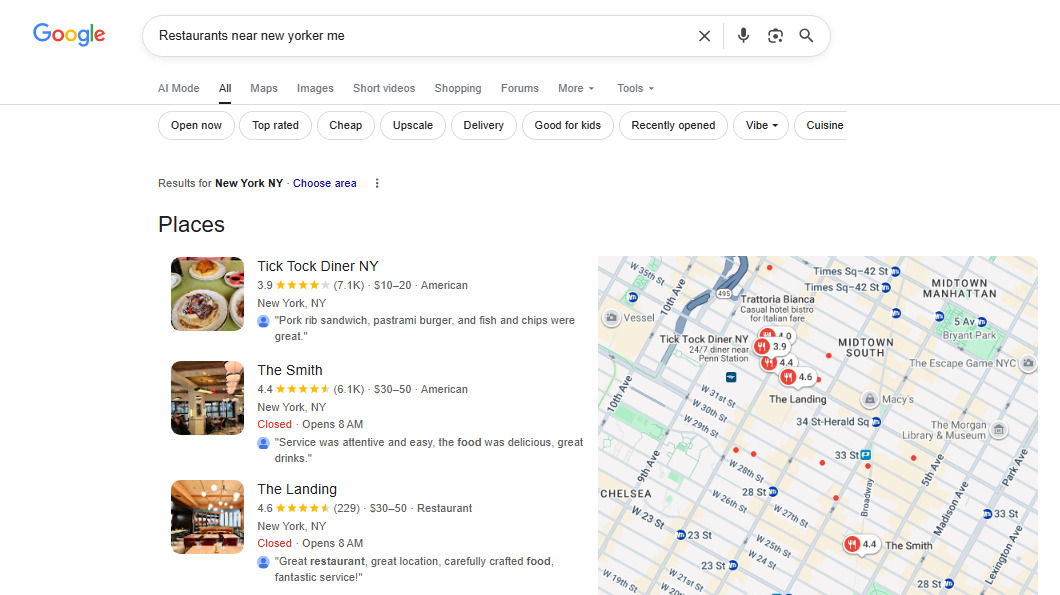
Your Google Business Card: Setting Up Google Business Profile
Google Business Profile (GBP) is your establishment's "storefront" in Search and Maps. Without it, a restaurant is practically invisible for local queries.
Key steps:
- Complete your profile fully. Name, address, phone number, website, opening hours, cuisine type, parking, accessibility.
- Add photos. Interior, dishes, dining area, bar – the more photos, the higher the trust.
- Publish updates. News, promotions, seasonal dishes. Google favors active profiles and shows them more frequently in search results.
- Respond to reviews. Even a short reply shows you care.
A Google Business Profile is the foundation of restaurant marketing. It helps you get on the map, receive calls and bookings, and improve your ranking without an advertising budget.
The Power of Reviews: A Strategy for Turning Happy Guests into Your Asset
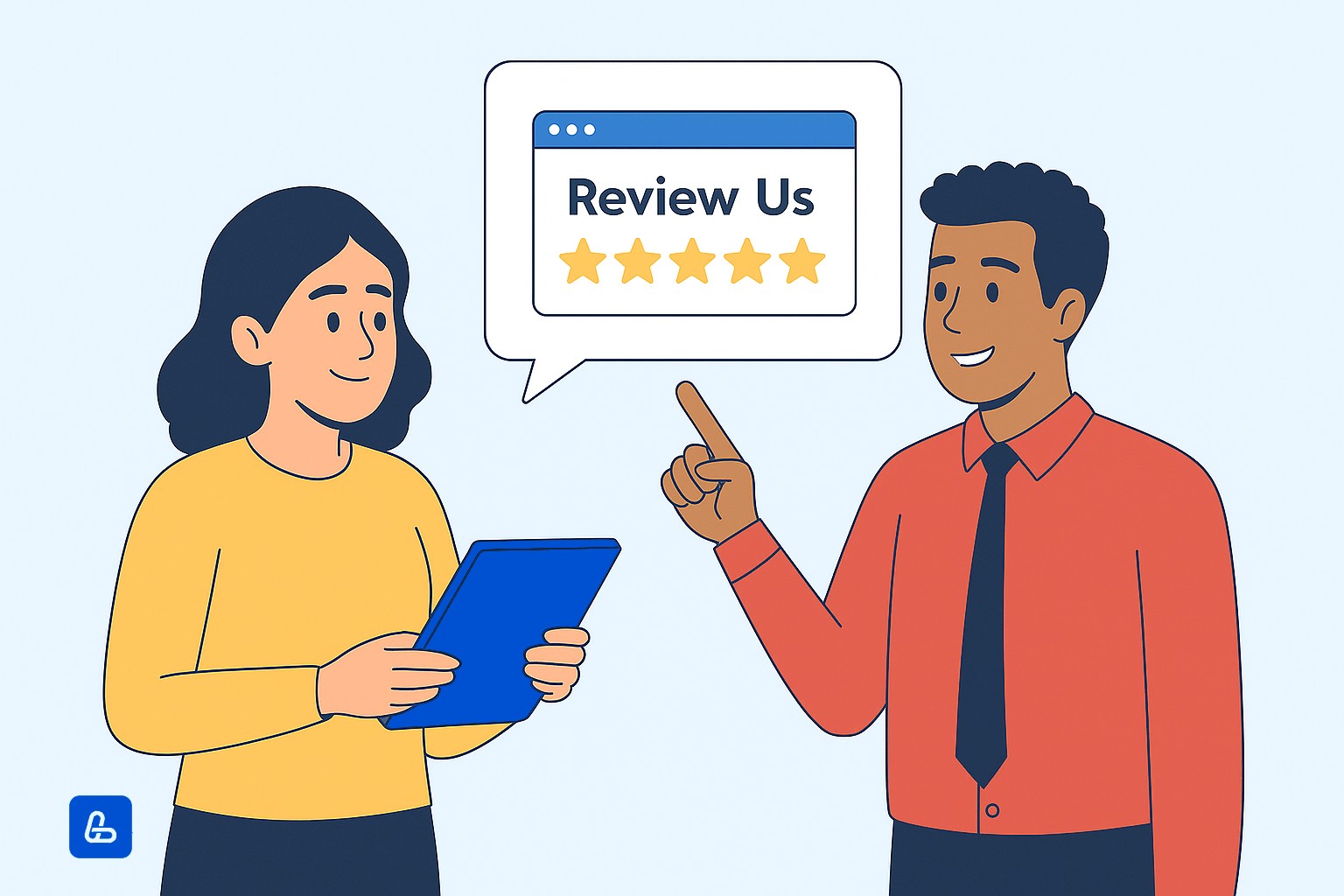
Reviews are a key factor in local ranking. The more reviews you have and the higher your rating, the more often Google shows your restaurant in "near me" results.
A working strategy:
- Ask guests to leave a review right after their visit.
- Send a link to your review page via SMS or messenger.
- Respond to every comment – both positive and negative.
- Naturally incorporate keywords into your responses (e.g., "Thank you for choosing our Italian restaurant downtown!").
Reviews are free content that boosts visibility and influences visitors' decisions. People trust real stories more than advertising.
NAP Consistency: Uniform Data Across the Entire Web
NAP (Name, Address, Phone) is the foundation of local SEO. If an old address or a different phone number is listed somewhere, Google loses confidence that it's the same business. As a result, the restaurant drops in rankings.
To avoid confusion:
- Check NAP data on all platforms.
- Update information after any change.
- Use a single format for writing the address and phone number.
Consistent data creates a clear digital footprint, strengthens trust with search engines, and improves map rankings.
Beyond Google: Additional Platforms for Mentions
To make local SEO for restaurants work as effectively as possible, you shouldn't limit yourself to Google alone. Users actively utilize various services to find restaurants in advance. Every mention with correct data strengthens search rankings and helps attract more guests.
Key platforms for mentions:
- Tripadvisor – a key resource for tourists. A profile with up-to-date reviews and photos helps not only visitors but also search engines perceive the restaurant as a popular place.
- Yelp – one of the leaders in the USA. An active profile with reviews, photos, and cuisine description boosts trust from Google and Bing.
- TheFork / LaFourchette – popular booking platforms in Europe. Maintaining a profile with accurate NAP and current menus gives an additional signal to search engines about your activity.
- Local directories and media – city event guides, culinary portals, blogs, and local guides. Publishing an article, an interview with the chef, or an event announcement helps expand your presence.
- Facebook, Instagram, and other social networks influence local ranking through mentions and user activity. Regular posts about dishes, promotions, or events create a digital footprint and attract organic traffic.
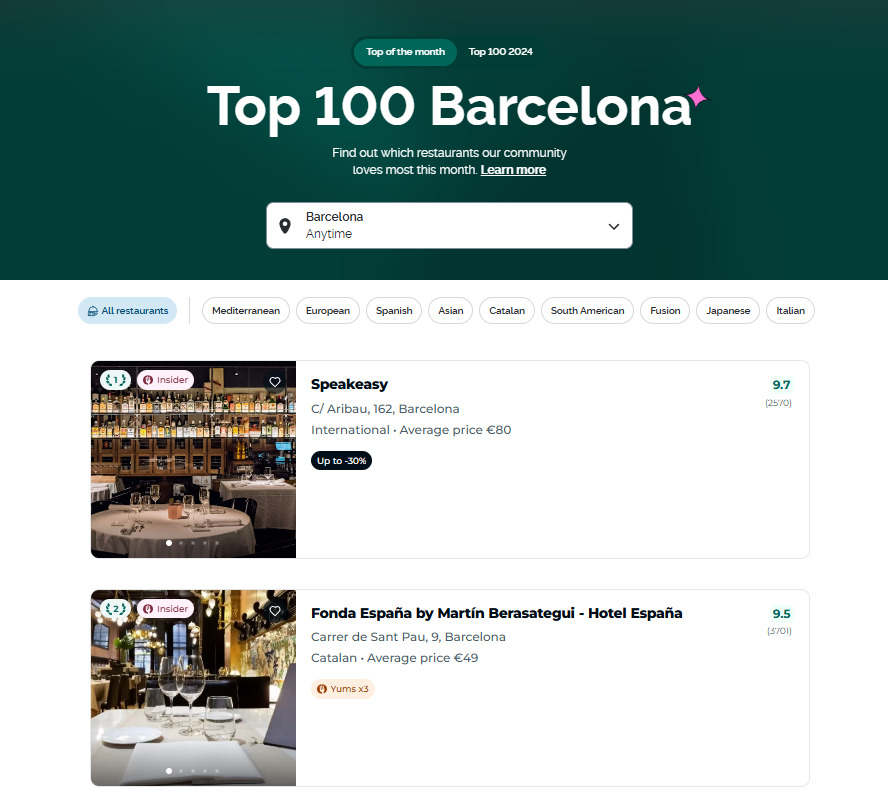
A proper mention strategy allows you to occupy more visible positions not only on maps but also in regular search results, increasing the flow of guests without additional advertising costs.
Keywords and Content: How You're Found in Search
For a restaurant to appear in Google for the right queries, you need to understand how people search for food and establishments. Content without a well-thought-out semantic core doesn't work. Restaurant SEO is built on proper keyword research, text structure, and visual presentation. This is what turns a website into a stable source of bookings.
How to Find Keywords for Your Restaurant
Keywords show what queries your potential guests are typing. These aren't just obvious phrases like "restaurant downtown," but also specifics: "breakfast with a sea view," "vegan cafe in Riga," "Italian cuisine nearby."
To gather keywords:
- Use tools like Google Keyword Planner, Ahrefs, Semrush, or Ubersuggest.
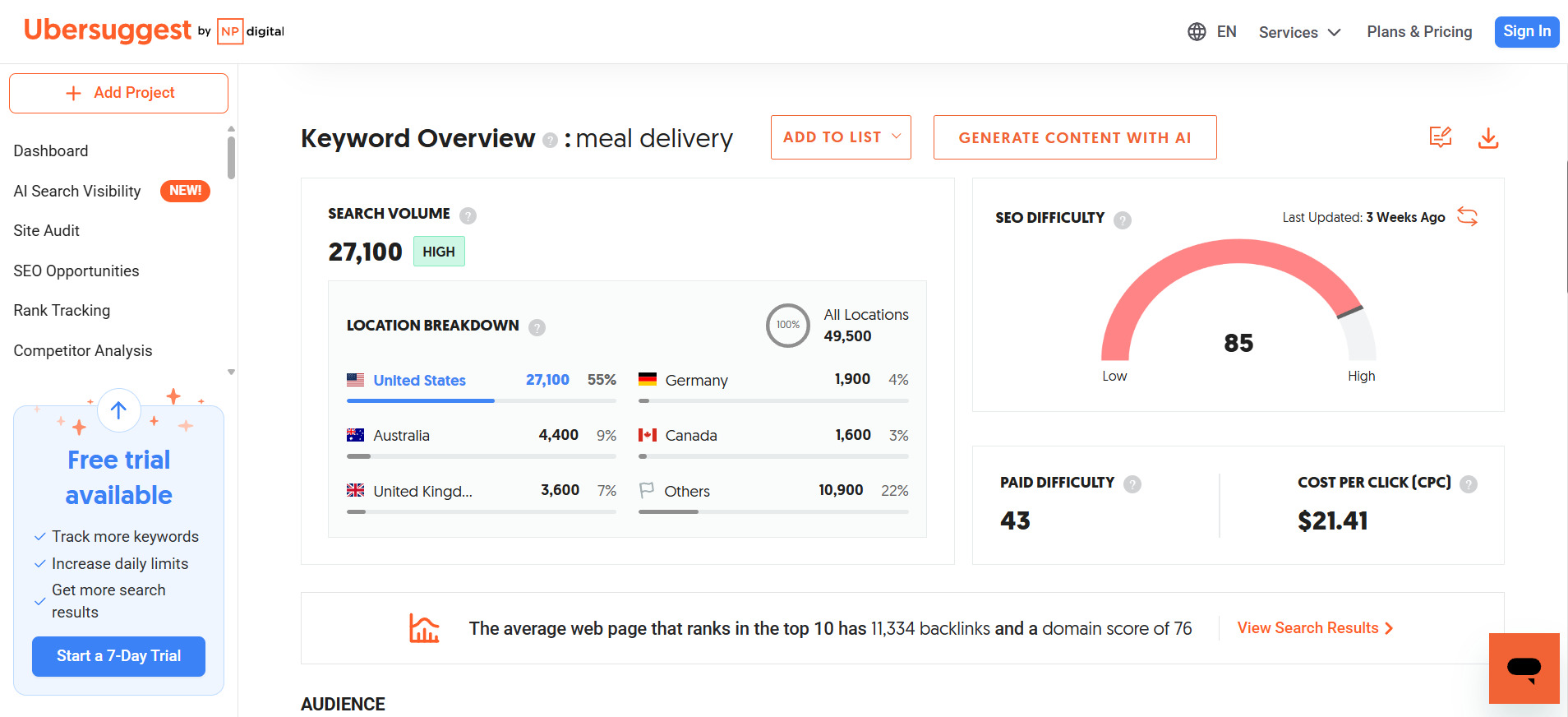
- Analyze the People Also Ask section in Google – it shows real user questions.
- See which queries already bring traffic to your competitors.
- Focus on local phrases: neighborhood, city, cuisine type.
Group the keywords:
- Commercial ("book a table," "lunch delivery").
- Informational ("how to choose a wedding restaurant").
- Local ("restaurant in the old town of Tallinn").
This will help build the website structure and content plan. How to promote a restaurant in search directly depends on the accuracy of key phrases: the more precise the wording, the higher the conversion.
Meta Tags and Titles That Make People Want to Click
The Title tag and meta description are the first things a person sees in the search results. If the title is boring, they'll just scroll past.
Tips:
- In the Title, add the keyword and specifics: "Georgian Restaurant in Vilnius – Book Online."
- In the Description, write a call to action: "Try khinkali, khachapuri, and homemade wine. You can book a table directly on our website."
- Use emotions and benefits, but avoid clichés.
Well-crafted meta tags increase CTR even without improving rankings. It's a free way to boost traffic and enhance restaurant marketing.
Blog Topics That Work for Promotion
A blog helps expand your semantic core and show the restaurant in search results for hundreds of additional queries. It works as a content magnet.
What to write about:
- Breakdowns of dishes and ingredients: "How to Choose the Right Meat for a Steak."
- Stories about the chef or team – this personalizes the brand.
- Reviews of local products and farmers.
- Round-ups: "5 Places for Dinner in New York."
- Tips for guests: "When to Book a Table for Valentine's Day."
Every article should include internal links to menu pages, booking, or contacts. This way, the blog doesn't just inform but guides the person toward action. For restaurant marketing, content plays the role of a soft sales channel that builds trust.
Images That Get Found: The Secret to Optimizing Images
Visuals are crucial for restaurants. People often search not only with text but also through Google Images. Photos of dishes, the interior, and events can bring in new guests.
To make images work for SEO:
- Use descriptive file names: "pasta-carbonara-praha.jpg," not "IMG_1123.jpg."
- Write alt tags with description and a keyword: "Margherita pizza at an Italian restaurant in Prague."
- Compress images using TinyPNG or Squoosh to speed up loading times.
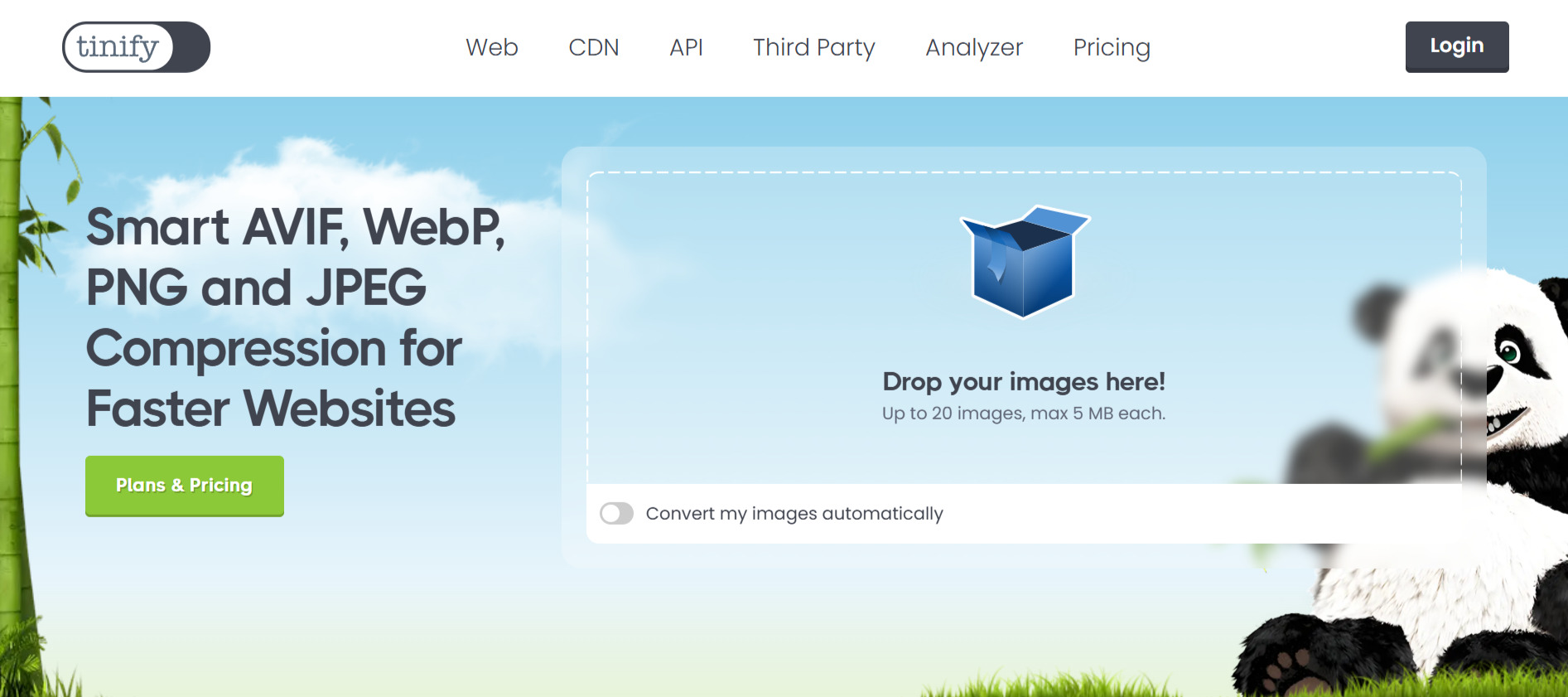
- Add watermarks with your logo – this strengthens the brand and protects content.
Well-optimized photos not only speed up the site but also improve rankings. In SEO for restaurants, this is especially important: a beautiful, fast, and properly labeled image sells better than any text.
Link Building Strategy: Building Trust and Outpacing Competitors
Backlinks are one of the strongest ranking factors. For restaurants, they are no less important than for online stores or media.
The restaurant niche is highly competitive, and websites often look similar. Therefore, external links help Google understand whom to trust and rank higher.
What Backlinks Are and Why Your Restaurant Needs Them
Backlinks are links from other websites to your site. If the media, local directories, blogs, or culinary portals talk about your restaurant, search engines perceive this as a sign of trust.
Benefits of backlinks for restaurants:
- Increased Google Trust. Authoritative sites boost rankings even for competitive keywords.
- Additional Traffic. People click through from articles, ratings, or reviews.
- Enhanced Local SEO. Mentions with accurate NAP data help appear in "near me" results.
- Semantic Expansion. Links often bring new visitors searching for related topics – cuisine, events, tastings.
Proper link building for restaurants strengthens rankings, boosts domain authority, and attracts guests even for broad queries like "where to eat downtown."
White-Hat Methods: How to Get Quality Links
In the restaurant sector, only natural, white-hat methods work well. They provide stable results and carry no risks.
Effective methods:
- Publications in Local Media City portals and news outlets often write about new menus, chefs, food festivals. Contact the editorial team and suggest a news angle: a seasonal menu, a collaboration, a charity dinner.
- Food Bloggers and Journalists Invite an author for a tasting, suggest they cover the restaurant's story or cuisine. Such content provides strong, authentic links.
- Directories and Listings Platforms like Tripadvisor, Yelp, OpenTable, TheFork, local guides, and city event calendars are safe, natural sources of links.
- Collaborations with Brands Suppliers of coffee, wine, or farm produce often run blogs and social media accounts. A collaborative piece provides a link and enhances restaurant marketing.
- Guest Articles Cuisine reviews, chef's tips, or location roundups are easily published on culinary portals. The key is to write useful content, not advertise.
- Partnership Events. A tasting evening, a local festival, a masterclass. After the event, partners publish reports and link to the restaurant.
If a restaurant needs a focus on stable, scalable link building, it can delegate the work to experts. The LinkBuilder.com team specializes in finding quality platforms, negotiating, and securing safe links for restaurants.
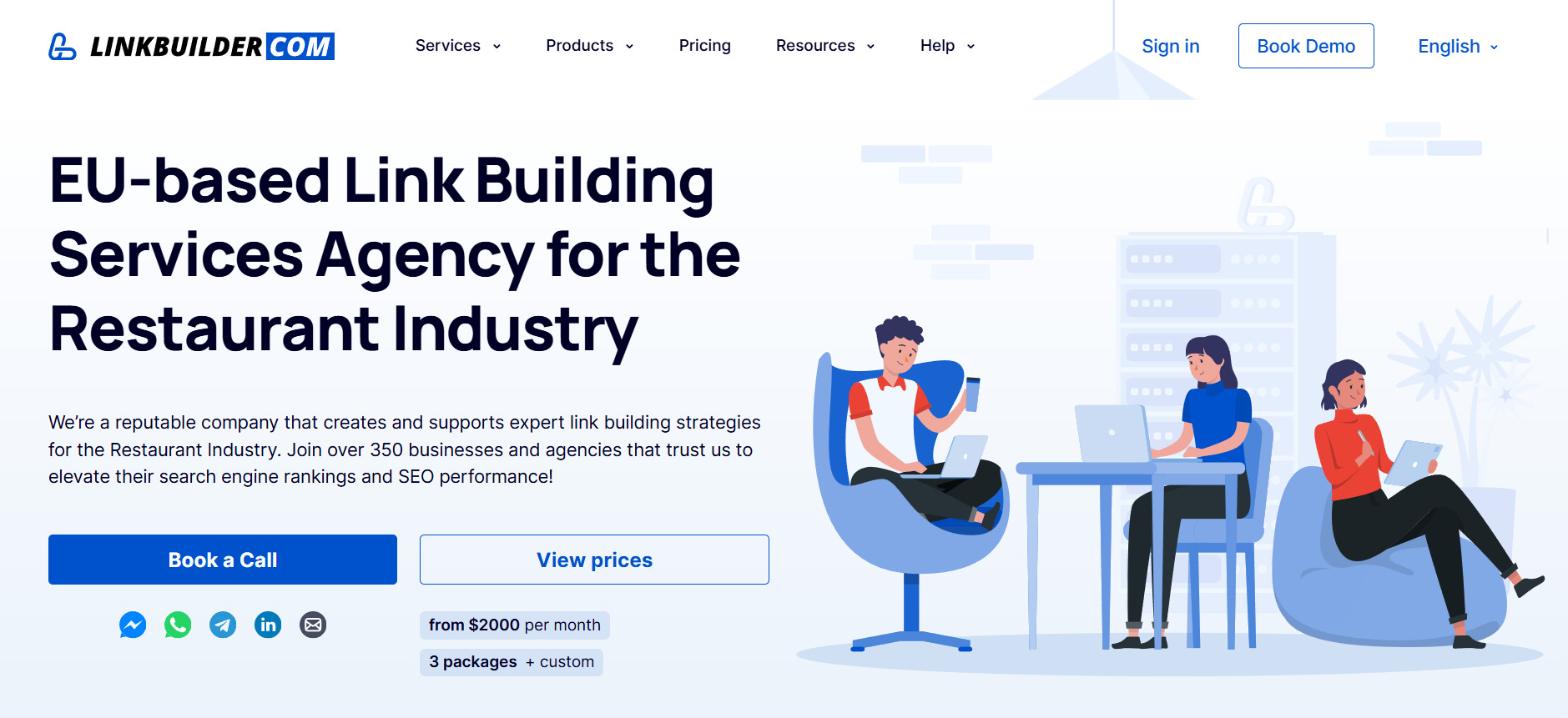
This is relevant when:
- there's no time to negotiate with media;
- growth is needed in a competitive region;
- the restaurant is entering a new market;
- it's important to build links gradually and systematically.
In such cases, professionals create a strategy, select platforms, and control publication quality. This speeds up promotion and reduces the risk of errors.
Dangerous for Your Site: Link Building Tactics to Avoid
Link building can backfire if done incorrectly. In the restaurant niche, some methods provide quick links but pose risks to the website.
Risky practices:
- Buying links on exchanges. Google easily recognizes unnatural anchor texts and repetitive patterns. The result – ranking drops.
- Low-quality PBN (Private Blog Network) sites. Such sites are created solely for links. The link profile becomes toxic, and rankings fall.
- Comment spam. Links from blog or forum comments no longer work and damage domain reputation.
- Spammy directories. Directories without traffic or moderation add junk links that harm restaurant website SEO.
- Uncontrolled low-quality publications. If an article is unreadable, the site is irrelevant, or links are in commercial anchors, Google's trust decreases.
In link building, naturalness, diversity, and value to the reader are key. Links should look like recommendations, not manipulation attempts. This is the safe path that strengthens SEO for restaurants and helps the restaurant grow confidently in search.
Regional Specifics: Promotion Nuances in the USA, EU, and CIS
Promoting a restaurant in different countries follows general principles, but the details vary significantly: competition level, guest behavior, importance of local platforms, and even content requirements. Proper localization of the strategy allows you to rank faster and attract guests specifically from your region.
The American Market: How to Stand Out Amid High Competition
The US restaurant industry is ultra-competitive, so SEO for restaurants in USA requires high precision.
Key features:
- Google Business Profile is the primary channel. Top positions for "near me" queries are determined by photos, response speed to reviews, categories, and attributes (outdoor seating, vegan menu, wheelchair access).
- Strong role of aggregators. The American audience actively leaves feedback, and a rating below 4.3 already reduces conversion. Fresh reviews on Yelp, Tripadvisor, OpenTable, DoorDash, and Uber Eats directly impact search rankings.
- Fierce competition for local queries. Meticulous work with local keywords and boosting site authority through local media and bloggers is necessary. Video reviews, TikTok trends, and Instagram Reels generate huge traffic.
- Content must be emotional. The American audience values storytelling: the chef's story, dish origins, and brand values.
To stand out, a restaurant needs a comprehensive approach: a strong GBP, active social media, 100% managed reviews, and publications on local portals.
The European Approach: Nuances of Promotion in EU Countries
The European market is heterogeneous: for example, promoting a restaurant in Spain works differently than SEO for restaurants in Latvia and Lithuania. For stable growth, it's important to consider differences in user behavior, popular directories, and languages. Here are a few examples:
Spain:
- Strong role of the local platform TheFork in SEO for restaurants in Spain.
- Many queries in regional languages (Catalan, Galician, Basque), so localization is crucial.
- A high percentage of tourists means SEO in English is also necessary.
- Photos of dishes and the terrace are critical – users search for them directly in Google Images.
France:
- One of the most competitive markets in Europe: Paris, Lyon, Marseille are hot zones with high demand and dense competition.
- Key platforms: Google Maps, LaFourchette (also TheFork), Michelin Guide.
- The French audience is very sensitive to menu quality and dish descriptions. In SEO for restaurants in France, it's important to:
- describe ingredients and product origins;
- optimize pages for queries about specific specializations;
- maintain high review quality.
Lithuania and Latvia:
- Main sources – Google Maps, Tripadvisor, local directories, and media.
- High sensitivity to reviews: a negative comment can lead to a noticeable drop in rankings.
- Users often search for restaurants by national cuisine. For example, to achieve results with SEO for restaurants in Riga, use queries like "Latvian cuisine downtown" or "Italian restaurant in Riga."
- Multilingualism. A website for a restaurant in Lithuania should be in at least Lithuanian and English to attract tourists.
In the EU, it's important to balance local identity and international appeal – especially in tourist cities.
CIS: Effective Tactics
Promotion in the CIS has its own specifics – let's consider the example of SEO for restaurants in Kazakhstan.
Key points:
- Google dominates, but Yandex remains relevant. It's important to optimize the site for both algorithms.
- Strong role of local services: 2GIS, Zoon, and major city directories.
- Popularity of messengers. It's important for the website to offer quick contact options via WhatsApp/Telegram.
- Active social networks. Instagram and TikTok directly influence guest flow – UGC often leads to sudden spikes in search demand.
- Setting up GBP and Yandex Maps profile. Many users choose a restaurant based on photos, ratings, and the menu in the business listing.
- Multilingual promotion. Ideally, the site should work in three languages: Kazakh, Russian, and English.
Tactics: focus on local mentions, quick response to reviews, a quality 2GIS profile, and collaborations with local bloggers.
Content Localization Specifics: How to Adapt a Website for Different Regions

For restaurants operating in multiple countries or cities, localization is the key to high rankings.
Important considerations:
- Language and dialects. USA – one version of English, EU – a mix of local languages; Spain – separate regional versions.
- Local keywords. For example:
- "best sushi in Chicago"
- "Spanish tapas in Vilnius"
- "Italian restaurant in Almaty."
- Local landing pages. Each city needs its own page with the address, menu, photos, and NAP data.
- Menus and currencies. Different prices, currencies, units of measurement – all affect conversion.
- Local cultural expectations. In the USA, dietary options (gluten-free, vegan) are important; in the EU – product origins; in Kazakhstan – family-friendly format and large portions.
A well-localized site helps a restaurant become "local" in every region and rank faster for geo-specific queries.
Success Analytics: What to Track for Growth
Analytics helps understand which efforts yield results and where the traffic you're already attracting is going. Without it, it's difficult to assess the effect of SEO, improve the website, and increase the number of bookings. When data is under control, you find weak spots faster and manage growth more precisely.
Key Metrics for Your Restaurant
Analytics shows how visitors find the site, which pages lead to bookings, and where you lose customers. To understand the big picture and control growth, it's important to monitor several groups of metrics.
Search Traffic
Online sales and bookings directly depend on how many people visit the site through organic search. Monitor:
- total volume of organic traffic;
- weekly and monthly dynamics;
- new and returning visitors.
If traffic grows steadily, it means the restaurant website SEO is working.
Rankings for Key Queries
Check how the restaurant ranks for:
- geo-queries like "Italian restaurant near me";
- brand queries;
- commercial queries with dish names and cuisines.
Improving rankings indicates that SEO for restaurants is enhancing visibility.
Conversions
This is the most important part. Track:
- table reservations;
- food orders;
- phone call clicks;
- clicks to initiate delivery orders.
Every conversion brings you closer to the goal – increased revenue.
On-Site Behavior
Signals of user-friendliness:
- pages per session;
- time on page;
- exit pages;
- bounce rate.
If users leave quickly, check the speed, photos, menu, and structure.
Reviews and Mentions
Positive dynamics in reviews strengthen SEO for restaurants. Regular mentions show search engines that the restaurant is generating interest.
Goal Setting: How to Track Online Bookings and Orders
For analytics to aid decision-making, goals need to be set up clearly. They show how the site turns traffic into real actions.
What's important to track:
- booking form submission;
- click on the "call" button;
- click to the delivery service;
- proceeding to checkout;
- order via widget;
- sign-up for an event or tasting.
In Google Analytics, you can set up events manually or via Google Tag Manager. Events record every step: viewing the menu, adding dishes, interacting with the map, proceeding to booking.
After setup, you'll see:
- which pages lead to bookings;
- where people drop off;
- which channel brings more orders;
- the cost per acquired guest.
If you're launching restaurant marketing, without event tracking, you won't understand if your efforts are paying off.
Diagnostic Tools: Google Search Console and More
To see weak spots in SEO, you need tools that show how search engines perceive the site. Below is a list of essential services.
- Google Search Console. Allows you to check:
- which queries bring traffic;
- CTR by page;
- search impression share;
- indexing errors;
- mobile-friendliness.
- Google Analytics. Shows the user's journey, analyzes behavior, and records conversions. It's the foundation of local SEO for restaurants.
- Ahrefs / Semrush. Needed for analyzing backlinks, visibility, and competitors. You'll see which pages need strengthening and promotion through link building for restaurants.
- PageSpeed Insights. Shows how fast the site loads. Slow pages lose traffic and conversions.
- Hotjar or similar heatmap tools. Records real user actions. With it, you'll see where the visitor stops, what they ignore, and why they don't complete the booking.
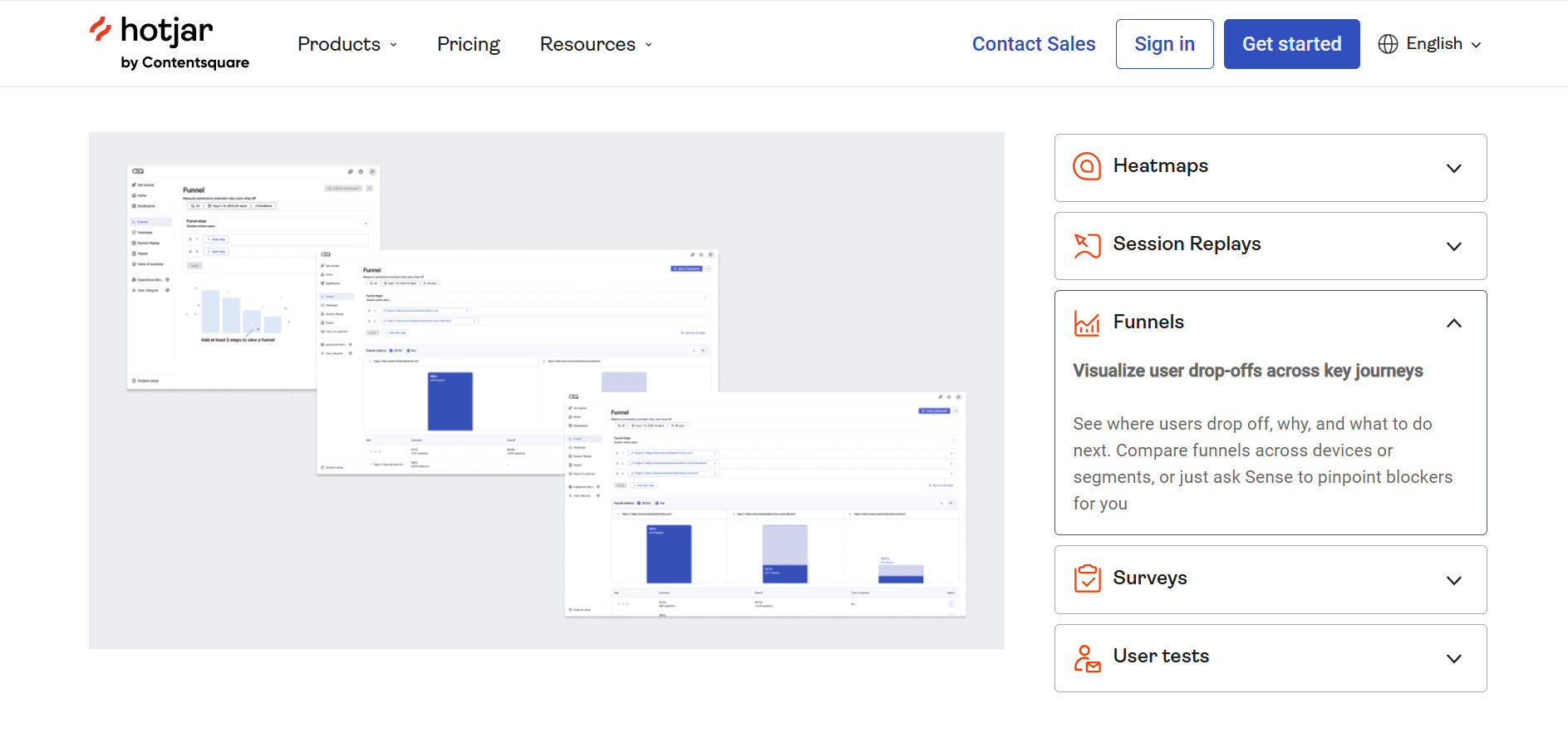
- Specific aggregators and maps. Depending on the market, additionally track:
- Yelp for the USA;
- Tripadvisor;
- TheFork for Europe.
The right metrics and analytics provide the ability to manage growth, rather than guess why sales aren't moving.
Top 5 Mistakes That Hinder Your Restaurant's Promotion

Even with a great menu and beautiful interior, a restaurant's website might not attract guests. Often, the reason is simple mistakes that slow down SEO and reduce conversions. They are easy to fix if identified and resolved in time.
Slow and Non-Mobile-Friendly Website
Speed and mobile-friendliness are critical factors. People won't wait more than 2–3 seconds for a page to load. On mobile devices, the site must be convenient: buttons, menu, booking – everything should be easily accessible.
If the site is slow or unreadable on a smartphone, users leave, and search engines consider this in their ranking. Restaurant website SEO includes working with images, caching, reducing scripts, and mobile rendering.
Dormant Google Business Profile
A Google Business Profile without updates and photos reduces visibility. If the profile is empty, has no reviews, or they aren't moderated, algorithms perceive the restaurant as less popular.
Activity in GBP – posts, responses to reviews, photos of dishes and interior – directly impacts local SEO and visitor flow.
Menu in PDF Format
A PDF file isn't indexed by search engines and is inconvenient for mobile users. Guests don't want to download documents just to see what's on the menu.
The menu should be placed directly on the website: on separate pages or tabs. This improves accessibility, enhances rankings for relevant queries, and increases conversions.
Ignoring Technical Errors
Indexing errors, broken links, duplicate pages, lack of schema markup, and slow loading – all of this lowers the site's rating.
Regular audits via Google Search Console, PageSpeed Insights, and SEO tools help find and fix technical issues before they start hindering promotion.
Buying Links and Other Risky Tactics
Unnatural links, spammy exchanges, PBNs of unknown origin, and automated placements create a risk of Google penalties. A site's reputation is hard to restore, and traffic can drop for a long time.
If external optimization is needed, only turn to trusted agencies that use white-hat link building methods. Quality publications, guest posts, mentions in local media, and blogs strengthen positions safely and stably.
Addressing these points ensures visibility growth, improves local SEO, and turns the restaurant's website into a real source of bookings and orders.
12 Methods That Definitely Work in 2026

Restaurant promotion is constantly evolving. New search engine algorithms, growing mobile traffic, and the popularity of social networks require up-to-date methods. Below are 12 proven approaches that really work in 2026.
- Complete Google Business Profile Optimization. The most important point we've already discussed in the article. You need to not just fill out the Google Business Profile (GBP), but constantly update it. Regularly refresh the "Updates" section with news and promotions, add high-quality photos of the menu and interior. Meticulously fill out all establishment attributes like "suitable for vegans" or "has a patio." This helps attract your specific target guest.
- AI Integration in Restaurant Management. Artificial Intelligence is becoming an indispensable assistant for restaurateurs, taking over routine but important tasks. It automatically analyzes reviews, identifying systemic issues, and communicates with guests via smart chatbots, handling reservations and answering questions. On a deeper level, AI forecasts demand, helping optimize purchasing and staff scheduling. Furthermore, it can be used to create SEO texts for the website, considering local search specifics and attracting the target audience.
- Voice Search Optimization for Smart Speakers. With the increasing popularity of voice assistants, restaurants are increasingly adapting to this new search method. The main goal is to be in the top results for queries like "Okay, Google, find restaurants near me." Establishments optimize their online profiles for voice search and add features that allow not only retrieving information but also viewing menus or booking a table using voice commands.
- Video and Interactive Content. Dynamic and authentic video content has become the main tool for audience engagement. Restaurants host live streams from the kitchen, showing the cooking process, or from events, creating a sense of presence. Short, vibrant video recipes for Stories and Reels effectively capture attention, and virtual tours of the establishment in 360 degrees allow potential guests to assess the atmosphere and interior in advance.
- Hyperlocal Targeting. This method allows focusing the advertising budget on the hottest audience – people within a few minutes' walk. Using geotargeting, ads are shown within a 500-meter radius of the restaurant, with unique special offers for residents of specific buildings.
- Automated Loyalty System. Modern loyalty programs have gone far beyond simple discount cards. They now use data about each guest's order history to offer personalized dishes and promotions. Gamification elements – for example, quests ("try 5 dishes from the new menu") and rewards for a certain number of visits – turn a regular cafe visit into an engaging game, increasing visit frequency.
- Smart Reputation Management. Reputation in the digital age requires constant and immediate attention. AI-based systems help respond to reviews promptly and monitor brand mentions even in messengers. To encourage visitors to leave positive reviews, many restaurants place QR codes in the dining area. These codes lead to review pages on Google or social networks, making the process convenient for guests.
- Eco-SEO - Promotion Through Sustainability. Social and environmental responsibility are becoming important marketing tools. "Eco-SEO" is online promotion based on sustainable development. Such a restaurant considers the carbon footprint of dishes, actively supports local suppliers, and optimizes its website for queries related to ethical consumption. This attracts the growing audience of conscious consumers who value such initiatives.
- Instant Booking via Messengers. To minimize the guest's journey from wanting to visit the restaurant to making a booking, systems for reserving tables directly in popular messengers are being implemented. The system not only accepts requests but also sends reminders and confirmations to guests. It can be integrated with the loyalty program, awarding bonuses immediately after booking.
- Personalized Search Snippets. Technology allows taking standard search results to a new level. Search snippets (the block with basic restaurant information) are becoming dynamic and personalized. They can show table availability for a desired time in real-time, display personal promotions for a regular guest whose account is linked to the service, or integrate with the restaurant's event calendar, showing upcoming events.
- Link Building Strategy (Link Building). The quality and reputation of a restaurant's website in the eyes of search engines are determined by its link popularity. Only "white-hat" link building methods, where links to the establishment's site appear on authoritative platforms – city blogs, online publications, partner portals, and local guide sites –provide a sustainable and long-term effect. This increases trust from both search algorithms and potential visitors.
- Proactive Trend Analytics. Instead of reacting to trends after the fact, successful restaurants anticipate them using big data. Special services analyze popular ingredients and cuisines on social networks. This allows quickly updating the menu, following seasonal trends, and predicting future hits.
These methods not only attract new guests but also create a personalized experience that fosters a loyal community around your restaurant.
First Steps to Launch Promotion
Let's summarize everything we've discussed. Here's what you need to do to see quick results and avoid mistakes:
- Conduct a website and Google Business Profile audit. Check: loading speed, mobile version, menu accuracy, meta tags, structured data, and GBP information relevance. This is the foundation without which further promotion loses effectiveness.
- Research keywords and create a content plan. Identify what your guests are searching for – dishes, cuisine type, local queries. Assign them to website pages and blog topics. This immediately provides a foundation for SEO and advertising.
- Set up analytics and goals. Google Analytics, Search Console, conversion tracking for online bookings and orders – without this, you can't understand what's working. Setting up goals helps evaluate ROI from day one.
- Start working with reviews and social media. Collect UGC, respond to reviews, publish content on Instagram, TikTok, Facebook. Even basic activity improves visibility and brand search queries.
- Plan link building and external mentions. Start with safe, proven methods: directories, local portals, collaborations with bloggers. Links should be natural and useful.
It's important not just to promote "step-by-step" but to build a strategy with an expert from the start. Professionals at LinkBuilder.com can help:
- conduct an audit and develop a promotion plan;
- research keywords and optimize the website;
- set up local SEO and review management;
- safely grow the backlink profile.
By turning to trusted specialists, you save time, avoid risks, and start seeing real results immediately. Schedule a free consultation and we'll help you find the path to a constant flow of guests and stable revenue growth.








